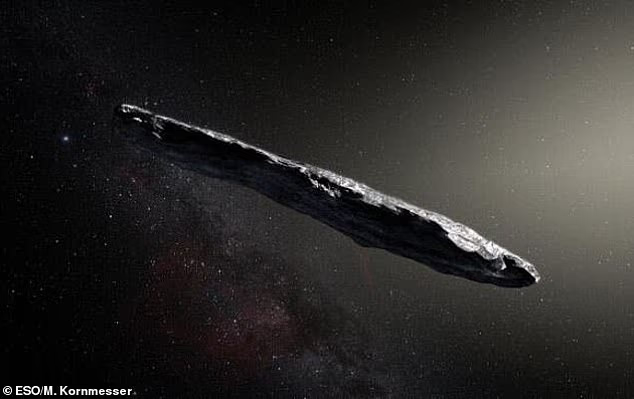BOSTON – Earlier this month, astronomers spotted a bizarre interstellar object hurtling through the solar system. Dubbed 3I/ATLAS, this 12 miles (20km) long visitor has travelled to our sun from another star on a journey that could have taken billions of years.
But now, a leading physicist says he has spotted the key piece of evidence that shows 3I/ATLAS could be an alien spacecraft.
Professor Avi Loeb, a theoretical physicist and cosmologist from Harvard University, told MailOnline that this interstellar object is simply too big to be natural.
Experts suggest that it must either be an exceptionally large solid mass or a smaller comet with a bright envelope of gas and dust.
Not a coment
If it is not a comet, Professor Loeb says 3I/ATLAS is so impossibly large that the chances of it naturally reaching our sun are incredibly low.
Professor Loeb says: ‘It is difficult to imagine a natural process that would favour a plunge towards the inner solar system at 60 kilometres per second.
‘An alternative is that the object targets the inner solar system by some technological design.’
3I/ATLAS was first spotted by astronomers on July 1 by NASA’s Asteroid Terrestrial-impact Last Alert System.
Origins Outside Our Solar System
After tracing its orbital path, scientists realised that its extremely elliptical orbit and high speed meant its origins lay outside the solar system.
This makes it only the third interstellar object that humanity has detected, following ‘Oumuamua in 2017 and Borisov in 2019.
Arriving from the direction of the constellation Sagittarius, 3I/ATLAS is currently heading towards the inner solar system at 135,000 miles per hour.
NASA predicts that it will reach its closest point to the sun on October 30, at a distance of 130 million miles (210 million km) – passing just within the orbit of Mars.
Thankfully, the object poses no threat to Earth and will pass harmlessly at around 150 million miles (240 million km) away at its closest point.
Since the object is currently around 300 million miles (490 million km) from Earth, astronomers can’t directly measure how large it is.
Instead, they try and work out how much light the object gives off and estimate its size based on how reflective it might be.
3I/ATLAS 200 Times Larger Than Oumuamua
If it is a solid object like an asteroid, which reflects around five per cent of the light that hits it, then 3I/ATLAS must be between 12 and 14 miles (20-24km) in diameter.
That makes 3I/ATLAS up to 200 times larger than the 100-metre-long and extremely thin ‘Oumuamua.
Professor Loeb says this fact immediately made him suspicious since large objects are typically much rarer than smaller ones.
Professor Loeb says: ‘Now you ask, “how many objects on the scale of ‘Oumuamua are there for each object that is 24 kilometres in size?”
Read more at Daily Mail







